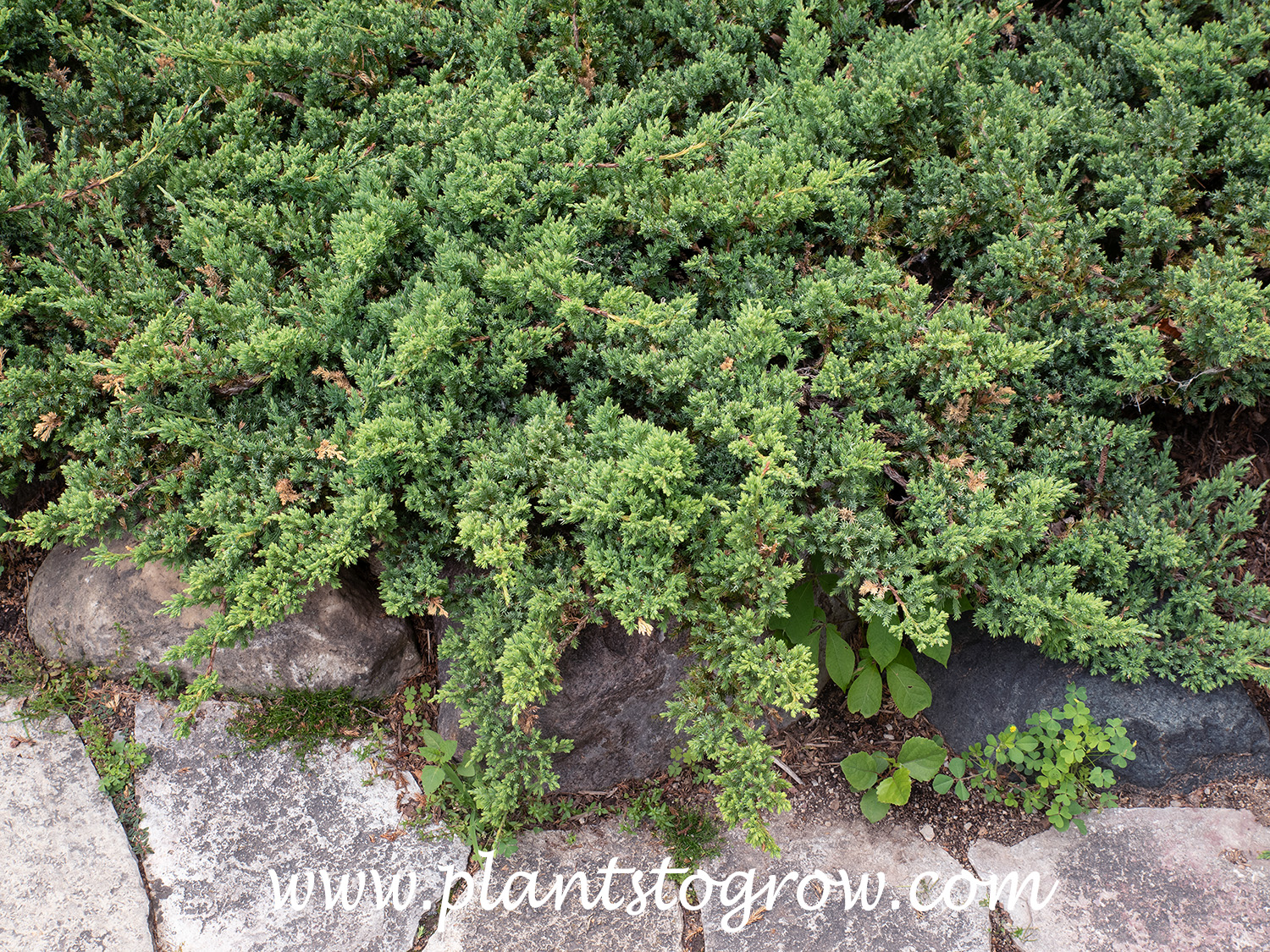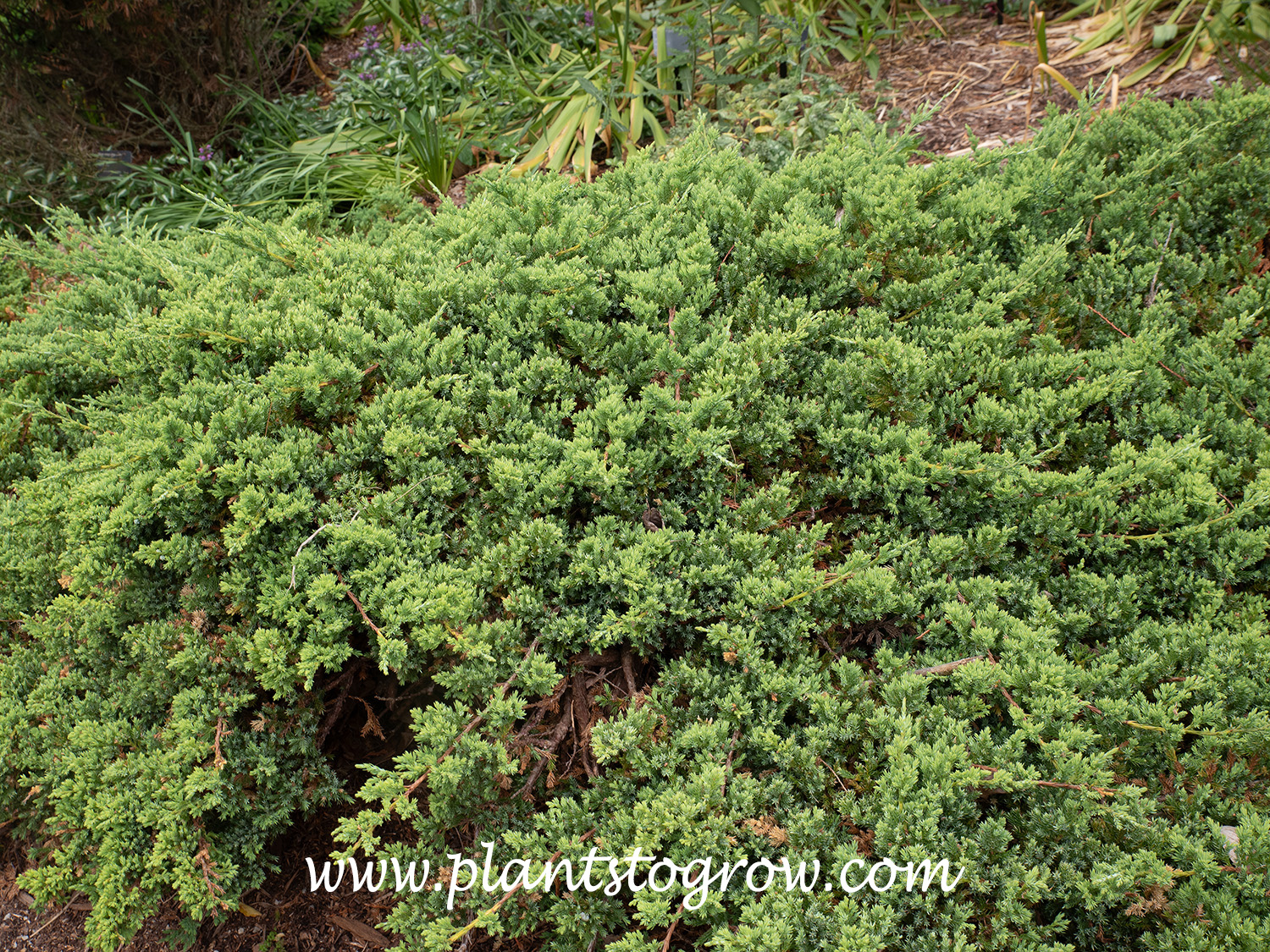| Description | Creeping Juniper (Juniperus horizontalis) is a hardy native, low-growing, needled evergreen shrub. It is grown as a ground cover plant that can cascade over rocks or retaining walls. |
|---|---|
| Pronunciation | (Jew-NIP-er-us)(hor-ih-zon-TAL-iss) |
| Plant Type | Shrubs Coniferous |
| Hardiness Zone | 3-9 |
| Sunlight | full, mostly sunny |
| Moisture | average, tolerates dry |
| Soil & Site | average, tolerates dry, sandy, and rocky soils |
| Flowers | Dioecious has male and female plants. None of the flowers are considered ornamental. |
| Fruit | Fleshy cones are found on male plants. |
| Leaves | Scale-like green evergreen leaves. |
| Stems | Brown bark that exfoliates as it ages. Most branchlets originate on the top since it is a procumbent creeping shrub. |
| Dimensions | 1-1.5 by 6-12 feet (HS), creeping (prostrate) |
| Maintenance | Pruning ground cover Junipers can be challenging, as many people cut the ends, resulting in pointed, stubby branches after a few years. To avoid this, lift the outer branches and trim the underlying ones while feathering back the top branches to a branch crotch. This will create a softer outer edge for the shrub. Additionally, some branches may die for no apparent reason, so they should be removed with pruning shears. |
| Propagation | cuttings, seeds |
| Native Site | Native to all Canadian providences and many states in the northern third of the USA. |
| Misc Facts | The native Creeping Juniper is seldom utilized in the landscape, while its many cultivars are popular landscape shrubs. |
| Notes & Reference | #01-Manual of Woody Landscape Plants (Michael Dirr), #279-Junipers of the World (Dr. Robert P. Adams), #274-Site Authors' observations and growing experiences of planting and maintaining many Juniperus horizontalis cultivars |

Cart


